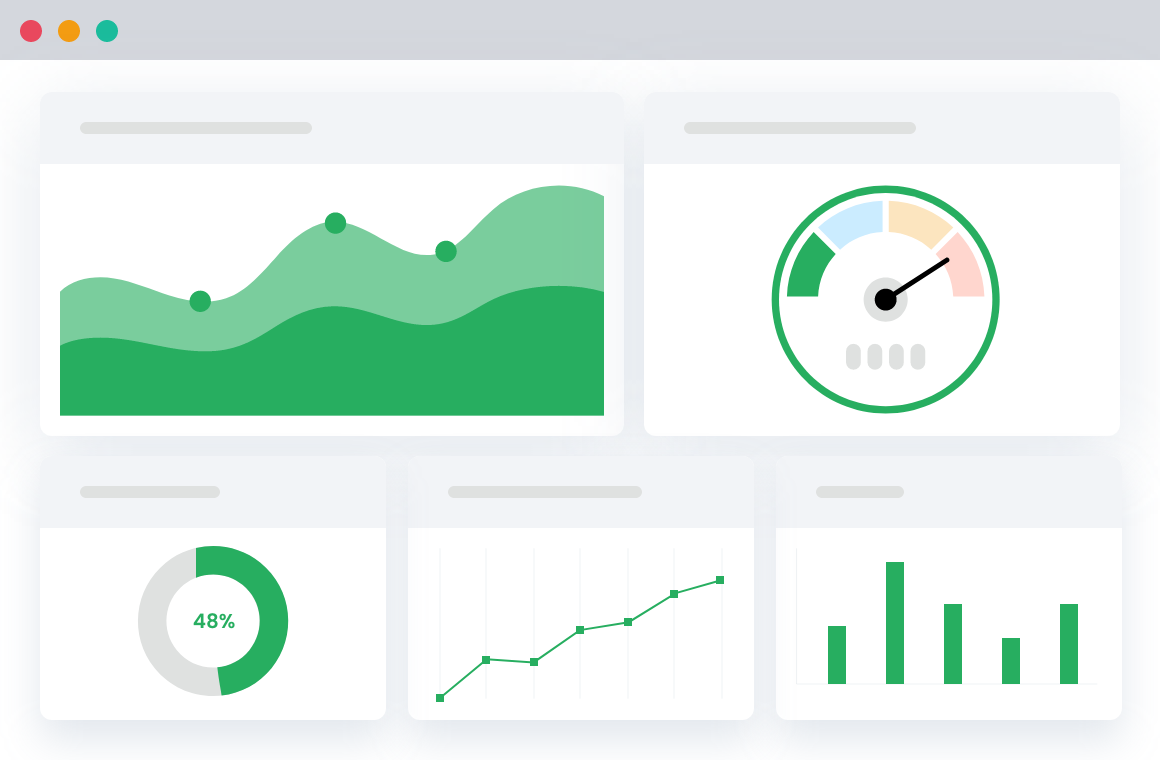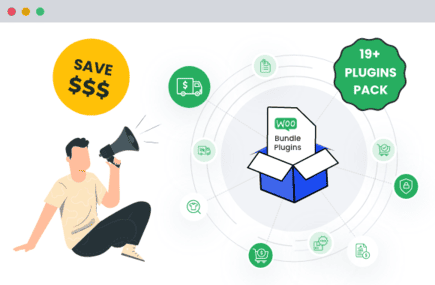Table of Contents
In order to succeed, eCommerce businesses have to consistently understand and meet customer needs. One effective way to achieve this is by leveraging product-performance metrics.
Product-performance metrics are vital data points that provide insights into how products are performing within an online store. These metrics cover various aspects such as click-through rates, cart abandonment rates, and conversion rates.
By closely monitoring these metrics, eCommerce store owners can gain valuable insights into customer behavior and preferences. As a result, they can identify areas for improvement in the sales process.
For example, they can pinpoint popular products, identify items frequently abandoned in carts, and determine where customers drop off during checkout. Armed with this knowledge, store owners can refine their product offerings, optimize the sales funnel, and improve the overall shopping experience.
This guide explores the importance of product performance metrics and offers practical strategies for leveraging them to enhance eCommerce success. We’ll help you understand which metrics are most relevant to your products and provide actionable steps to integrate them into your sales and product strategy.
Why are product metrics important?
Product metrics offer invaluable insights into product performance, user engagement, and shopping behavior. By meticulously tracking these metrics, businesses can gauge progress towards goals, make informed decisions, and ultimately drive success.
Understanding the customer journey from product discovery to purchase helps identify points of friction in this journey, such as where customers lose interest or abandon carts. By taking actionable steps to eliminate these points of friction, eCommerce businesses can reduce abandonment rates and optimize conversions. For instance, if you’re consistently losing sales during the transition from cart to payment, you need to improve the payment process.
Product metrics aren’t just numbers—they help you to strategically improve your shop and stay competitive in the eCommerce space. They enable businesses to make data-driven decisions about their products and websites by offering objective evidence that justifies these decisions to stakeholders. By leveraging these insights, businesses can enhance user experience, optimize conversion rates, and ultimately make their business more profitable.
Navigating the maze of metrics: Which metrics matter?
With a plethora of data available, selecting the right metrics aligned with specific objectives becomes the key decision to make. Too many metrics can overwhelm and obscure what truly matters, while too few may result in a lack of relevant information. By focusing on key metrics that directly impact goals and objectives, businesses can streamline their data analysis efforts and make more informed decisions.
These are some of the questions eCommerce businesses should answer when selecting the most relevant metrics for each marketed product:
- What are the primary goals and objectives for this product?
- Understanding the overarching objectives helps prioritize metrics that directly contribute to achieving them.
- Who is the target audience for this product?
- Use metrics tailored to the specific preferences and behaviors of your target audience to gain relevant and actionable insights.
- What stage of the customer journey does this product cater to?
- Different metrics may be more relevant depending on whether the product targets awareness, consideration, or conversion stages.
- Which aspects of user behavior are critical to track for this product?
- Identifying key user actions, such as clicks, add to cart, and conversions, helps focus on metrics that reflect user engagement and intent.
- What are the potential pain points or bottlenecks in the sales process for this product?
- Prioritizing metrics related to overcoming obstacles in the sales funnel, such as cart abandonment or checkout abandonment rates, can uncover areas for improvement.
- How do these metrics align with broader business objectives and strategies?
- Ensuring coherence between product-specific metrics and overall business goals ensures that efforts are directed towards maximizing impact and ROI.
By carefully considering these questions, businesses can effectively narrow down the myriad of available metrics to those that are most relevant and actionable for each marketed product.
Does the metric reveal accurate and relevant insight into consumer behavior?
Choosing the right metrics that provide accurate and meaningful insights into consumer behavior is crucial for making smart decisions in marketing and sales strategies. By understanding patterns like when customers abandon their shopping carts or which products are commonly purchased together, businesses can customize their approaches to better serve customer needs.
For example, understanding user adoption or retention rates can guide targeted marketing efforts or suggest product recommendations, leading to increased customer satisfaction and sales. Metrics such as return rates offer valuable feedback on product quality and customer satisfaction, allowing businesses to refine their offerings and enhance overall performance.
Does the metric impact your product strategy?

The metrics chosen should directly influence product strategy, serving as the guiding “north star” towards which efforts are aimed. By scrutinizing metrics tied to product performance, businesses can pinpoint top-performing products, streamline inventory management, and guide product development endeavors. Metrics indicating enduring interest, like subscription rates or return visit rates, provide valuable insights into long-term customer engagement and loyalty. This data informs strategic decisions, ensuring resources are utilized efficiently and initiatives are in sync with overarching business goals. Ultimately, harnessing these metrics enables businesses to fine-tune their product offerings, elevate customer satisfaction, and foster sustainable growth.
Does the metric reflect your business goals?
Making sure your metrics line up with your business goals is key for staying on track and measuring progress effectively. Take conversion rate, for example—this metric is directly tied to common business objectives like boosting sales.By keeping an eye on metrics that directly tie into your goals, you can keep tabs on how well you’re doing and make smart decisions to push your business forward. For instance, a high conversion rate suggests your sales process is working smoothly, while a low rate might highlight areas that need some attention. When your metrics are in sync with your goals, you can focus on the initiatives that will help you reach those big-picture objectives faster, leading to better use of resources and faster growth.
Measuring your metrics accurately
Accurate metric measurement helps you to make strong eCommerce decisions, influencing ROI, customer experience, and business strategies. Precise data ensures informed decisions, maximizing ROI by identifying areas for optimization and capitalizing on successful tactics. Advanced tracking tools reduce your risk of relying on incomplete or inaccurate data, safeguarding against misguided strategies. Automated plugins streamline data collection and collation, saving valuable time and resources.
With a reliable tool or service in place, businesses can efficiently track metrics, gain actionable insights, and adapt strategies in real-time. This not only enhances the customer experience but also empowers businesses to refine their approaches, stay competitive, and achieve sustainable growth in the dynamic eCommerce landscape.
Dotstore’s advanced eCommerce tracking
Dotstore’s Advanced Ecommerce Google Analytics for WooCommerce plugin elevates data tracking to new heights, surpassing basic analytics tools with its precision and actionable insights. Compatible with WooCommerce, it resolves typical pain points by furnishing detailed reports crucial for informed decision-making.
This advanced plugin ensures measurement accuracy through its ability to track every stage of a customer’s journey, providing granular insights into user behavior. Moreover, it empowers users to set up custom metrics and dimensions, enabling in-depth tracking of additional information tailored to specific business needs.
Offering integration capabilities with WooCommerce, the plugin boasts unique tracking functionalities that enhance visibility into eCommerce operations. Its user-friendly interface and robust support system streamline the setup process and provide assistance whenever needed.
Furthermore, Dotstore’s Enhanced ECommerce Google Analytics for WooCommerce doesn’t just stop at basic analytics—it offers advanced analytics options for users seeking deeper insights. Overall, this comprehensive solution equips users with a robust set of product metrics, empowering informed decision-making and driving business success.
Enhanced Ecommerce Tracking
Leverage the power of analytics to boost your store’s performance and maximize profits.
14-day, no-questions-asked money-back guarantee.

Some important metrics for eCommerce stores
Tracking essential metrics is vital for eCommerce success. These metrics offer insights into website performance, customer behavior, marketing efficacy, and inventory management. This reporting enables store owners to optimize strategies for increased revenue and customer satisfaction.
- Website Traffic: Real-time tracking of sessions, visitor views, and page views reveals overall website reach and popularity among the target audience.
- Bounce Rate: Monitoring bounce rate identifies page optimization opportunities to keep customers engaged.
- Average Order Value (AOV): Understanding AOV can help you to design pricing and promotional strategies that increase customer spending and revenue.
- Cart Abandonment Rate: Tracking abandonment rate helps you to understand why customers leave, improving conversion rates.
- Customer Acquisition Cost (CAC): CAC tracking allows you to evaluate marketing channels so you can effectively allocate resources.
- Customer Retention Rate: Retention rate tracking focuses on retaining loyal customers, boosting sales.
- CLV (Customer Lifetime Value): CLV details the total revenue generated by a customer, which can inform retention strategies.
- Referral Traffic: Understanding referral sources allows you to optimize your marketing efforts towards the most valuable platforms.
- NPS (Net Promoter Score): NPS measures customer satisfaction, aiding in segmentation and understanding needs.
- Inventory Turnover Rate: Important for products with low shelf life, ITR measures sales growth and aids in inventory management.
- Abandoned Cart Recovery Rate: Tracks successful recovery from high abandonment rates so you can, improve overall store performance.
For a comprehensive guide on key metrics for WooCommerce stores to track, see our tracking essential metrics guide.
Product click rates
Product click rates simply measure how often users click on products while browsing an eCommerce site. These rates are super important for understanding how well your products are doing and how interested users are.
Product click rates are a big deal because they show you which products are catching the most attention. More clicks often mean more potential for sales, showing that users are really interested. But it’s not just about clicks—looking at other metrics like conversion rates and bounce rates gives you a full picture of what users are up to and how your products are performing.
When you dig into product click rates alongside these other numbers, you can make smart tweaks to your offerings and website to boost sales and make everyone happy.
Add to Basket Rates
The ‘add to basket’ rate metric measures the frequency with which users add products to their shopping carts. It serves as a crucial indicator of preliminary purchase intent within an eCommerce platform.
This metric directly reflects the appeal of products to potential buyers and the effectiveness of product descriptions and images. A higher ‘add to basket’ rate suggests strong product appeal and indicates that users are inclined towards making a purchase.
By analyzing this metric, businesses can assess the effectiveness of their product presentation and optimize product descriptions and images to enhance user engagement and drive conversion rates.
Begin Checkout Rates
Begin checkout rates tell you how often users start the checkout process after putting items in their carts. It’s a big deal because it shows they’re really serious about buying something. This metric is all about the user experience and how smooth the checkout process is. A higher begin checkout rate means things are going smoothly and it’s easy for users to buy from your store. But if the rate is low, it could mean there are some bumps in the road or confusing bits in the checkout process.
By keeping an eye on this metric, businesses can spot any issues in the checkout process and fix them up. That way, they can make buying products as easy as possible for their customers and get more people to complete their purchases.
Purchase Rates
Purchase rates are like a report card for how well a business is doing in the world of online shopping.
This metric shows how successful a business is at turning browsing into buying. It’s influenced by lots of things, like how things are priced, how much customers trust the brand, and how good the marketing is at convincing people to buy.
When purchase rates are high, it means customers are really into the brand and what it’s selling. It shows that the prices are right and the marketing is hitting the mark. By paying attention to purchase rates, businesses can tweak their pricing, build more trust with customers, and make sure their marketing is on point. This helps keep the business growing and making money in the long run.
From Data to Decisions: Making Your Product Metrics Actionable
Accurate interpretation of data, driven by well-selected product metrics, is crucial for informed business decisions. For instance, analyzing website traffic metrics can help you to uncover areas for optimization, like improving user experience or refining marketing strategies. Without accurate data interpretation, your decisions may be misguided, leading to wasted resources and missed opportunities.
Different methods of data analysis, such as trend analysis or cohort analysis, must align with business objectives to derive meaningful insights. Failing to do so can result in misinterpretation or overlooking important trends. For instance, a high cart abandonment rate may indicate issues with the checkout process or pricing strategy, necessitating adjustments to improve the customer experience and boost conversion rates.
It’s essential to consider both positive and negative indications in product metrics. High cart-abandonment rates, for example, may signal underlying problems in the customer experience or product offerings. Before acting on insights, confirm your process through methods like A/B testing or seeking customer feedback. This approach allows for a cost-benefit analysis to ensure that changes based on product metrics lead to a positive return on investment and, ultimately, drive business success.
Transform Your E-commerce Strategy with Actionable Analytics
Harnessing product metrics is pivotal for steering your e-commerce strategy towards success. These metrics provide invaluable insights that empower you to optimize the sales experience and pinpoint sticking points in your sales process, ultimately driving higher conversion rates and revenue.
To streamline data collection and analysis, leveraging a purpose-built plugin is paramount. Dotstore’s Enhanced Ecommerce Google Analytics stands out as an exceptional choice, offering customizable analytics tailored to your specific needs.
Take charge of your e-commerce journey today. Improve your conversion rates and enhance your sales process with the actionable insights gained from product performance metrics. Visit Dotstore to discover how Enhanced Ecommerce Google Analytics for WooCommerce can revolutionize your eCommerce game. Elevate your strategy and maximize your success now.
Enhanced Ecommerce Tracking
Leverage the power of analytics to boost your store’s performance and maximize profits.
14-day, no-questions-asked money-back guarantee.

